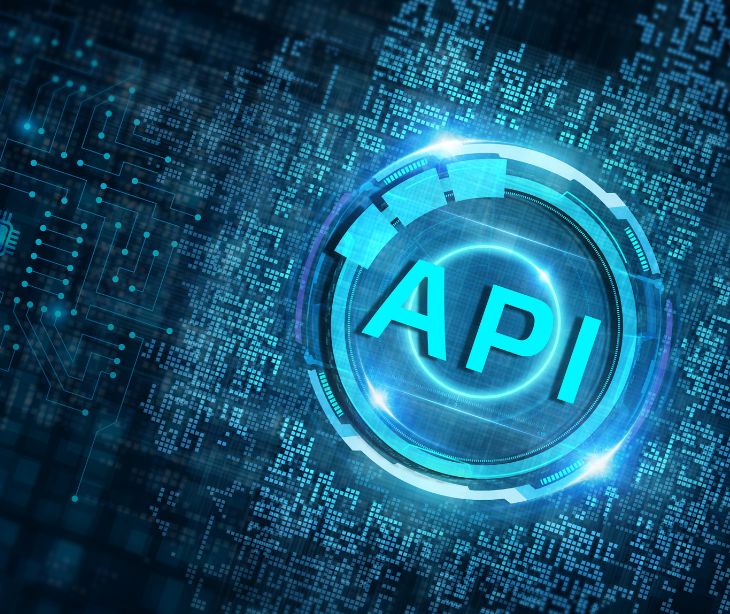
Adopting email APIs brings several advantages to digital communication strategies, enhancing efficiency and engagement. This is achieved through the flexible design of APIs, resulting in their dynamic application within healthcare email communications. However, the benefits discussed below, while available with Paubox Email API, might not be available in all HIPAA compliant email API solutions. For more insight read Top 10 HIPAA compliant email services.
Secure healthcare messaging with enhanced security & HIPAA compliance
The risk of malware infections and cyber threats is more prevalent than ever, with over 812 million malware programs identified worldwide by 2019. Healthcare organizations are particularly vulnerable, given the sensitive nature of the data they handle. Email APIs address these concerns head-on by integrating advanced security measures, including encryption and secure data transmission protocols, directly into the email communication process. They leverage the latest intrusion detection systems (IDS) and network-based intrusion detection systems (NIDS), such as Security Onion and Suricata, to monitor and protect against malicious network activity.
Healthcare conversations through streamlined communication solutions
A study interviewing U.S. thought leaders on standard-based APIs highlighted this advantage, revealing how APIs can improve health data interoperability. This is particularly relevant under US policy initiatives like the 21st Century Cures Act, which mandates using APIs to enhance access to electronic health information. By integrating APIs, healthcare organizations can maintain their current email service providers while ensuring secure, HIPAA-compliant communication.
This direct integration streamlines workflows, reduces the learning curve associated with new software, and leverages the familiar functionalities of existing email systems. The study's findings underscore the potential of APIs to streamline communications across diverse healthcare scenarios, from patient engagement to administrative tasks, thus facilitating a more efficient and interconnected healthcare ecosystem.
Lower healthcare costs with savings via email API integration
By integrating these APIs into their existing systems, healthcare providers can leverage robust, built-in security features that comply with HIPAA and other regulations without needing additional, costly security solutions or custom development. This integration saves on upfront costs associated with purchasing and implementing separate security software. It reduces ongoing expenses related to maintenance, updates, and staff training. Services like Paubox offer custom pricing tailored to the service's number of staff. This creates a cost effective solution that integrates directly into existing email providers.
Boost patient connections via improved engagement through personalized emails
A paper analyzing the patient-realted applications of APIs assessed early adopter health systems in interviews to explore their strategies, challenges, and insights into implementing patient-facing APIs, including email APIs. The personalized communication enabled by email APIs—ranging from appointment reminders to tailored health updates and educational materials—aligns perfectly with the study's objectives of enhancing patient access to their electronic health information. Such personalization strengthens the patient-provider relationship by demonstrating a commitment to individualized care and boosting patient engagement. Patients become more informed and proactive about their health, leading to better health outcomes and a more empowered patient experience.
Grow your healthcare reach with scalable email solutions for every size
Whether it's sending a few hundred appointment reminders or distributing thousands of personalized health updates, email APIs enable healthcare organizations to manage their communication needs efficiently. This scalability ensures that as a healthcare provider grows or experiences fluctuations in patient engagement, their ability to communicate effectively remains uninterrupted and responsive to their changing needs. Consequently, email APIs not only facilitate a broadened healthcare reach across diverse patient populations but also enhance the capacity of healthcare providers to maintain consistent, timely, and relevant communication with their patients. This adaptability supports healthcare providers in their mission to deliver patient-centered care and ensures that patients receive the information they need to make informed health decisions, regardless of the size or scale of the healthcare organization.
Unlock patient data power with insights & analytics for informed decisions
Using email APIs providers can automatically collect and analyze patient interactions and responses to email communications. This analysis yields valuable insights into patient behaviors, preferences, and health trends, facilitating a deeper understanding of patient needs. With this information, healthcare providers can tailor their services, improve patient engagement strategies, and enhance the overall quality of care. Moreover, the actionable data derived from these analytics supports healthcare organizations in making evidence-based decisions, optimizing resource allocation, and designing targeted health programs. Ultimately, using email APIs to harness patient data for insights and analytics empowers healthcare providers to make informed decisions that can lead to better health outcomes, increased patient satisfaction, and more efficient care delivery.
See also: HIPAA compliance and data analytics
FAQs
What is an example of an email API?
An example of an email API is SendGrid, which allows developers to easily send email notifications, alerts, and content to users directly from an application or website.
What are the different types of APIs?
The different types of APIs include public APIs (open to any developer), private APIs (restricted to internal use by a company), partner APIs (shared externally but only with specific business partners), and composite APIs (combine different data and service APIs to perform a task or execute a sequence of tasks).
DO APIs reduce staff training?
Yes, APIs can reduce staff training by automating complex processes and integrating disparate systems, simplifying user interfaces and decreasing the need for specialized knowledge, thereby minimizing the training staff need to operate systems or access data.
Subscribe to Paubox Weekly
Every Friday we'll bring you the most important news from Paubox. Our aim is to make you smarter, faster.



